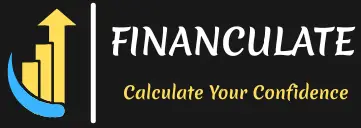Credit card balance issues are something many of us face—but there’s good news. With the right strategy, you can take control and pay down your balance quickly, saving on interest and finding peace of mind. Whether you’re dealing with one card or juggling several, these smart tips will help you chip away at your debt and build a brighter financial future.
In this guide, we’ll walk through seven simple yet powerful techniques to tackle your credit card balance and avoid the common pitfalls that keep so many stuck in the cycle of debt.
What Is a Credit Card Balance?
Your credit card balance is the amount of money you owe on a credit card at any given moment. This includes purchases, any cash advances, interest charges, and even fees. If you don’t pay off the full amount by your due date, that balance carries over into the next billing cycle—and that’s when interest starts piling up.
Keeping your balance low—or even better, paying it off each month—can help you avoid high interest rates and maintain a healthy credit score. Learn more about the official definition from Investopedia.
How to Pay Off Credit Card Balances Faster
Struggling with credit card debt can feel overwhelming—but it doesn’t have to stay that way. These practical tips will help you reduce your balance faster while boosting your financial confidence.
1. Pay More Than the Minimum
If you’re only making the minimum payment each month, you’re basically treading water. Most of that payment goes toward interest, not your actual balance.
Here’s why this matters: Let’s say you owe $2,000 at 18% APR and only pay the $40 minimum each month. It could take you years to pay off—and you’ll pay hundreds, maybe thousands, in interest.
Try this instead: Round up your payment to the nearest hundred, or set a goal to double or triple your minimum. Every extra dollar goes directly toward reducing your balance.
2. Consider a Balance Transfer
A balance transfer means moving your high-interest credit card debt to a new card—usually one with 0% APR for a promotional period. This gives you some breathing room to pay off what you owe without racking up more interest.
But remember: There’s usually a small fee to transfer balances (around 3-5%), and that 0% interest won’t last forever. So make a plan to pay off the full balance before the promo period ends.
3. Use the Avalanche or Snowball Method
Two popular strategies can help you organize your repayment:
- Avalanche Method: Pay off cards with the highest interest rate first. This saves money in the long run.
- Snowball Method: Tackle the card with the smallest balance first. Quick wins like this can motivate you to keep going.
Pick the one that fits your personality. If you love seeing instant progress, go snowball. If you’re focused on efficiency, go avalanche.
4. Cut Back on Extra Spending
This might seem obvious, but it’s powerful: Reduce your monthly spending and use the extra cash to pay down your card. Look at your budget and ask yourself:
- Can I eat out less this month?
- Do I really need that streaming service?
- Can I cut back on shopping or impulse buys?
Even saving $50–$100 a month can make a big difference over time.
5. Set Up Automatic Payments
Late payments not only add fees—they can hurt your credit score. Set up automatic payments to avoid missing a due date. This also keeps your cycle consistent, which can help with your budgeting.
You might also consider scheduling an extra payment during the month—even mid-cycle. This can lower your balance ahead of the statement date, which may help improve your credit utilization ratio.
6. Contact Your Credit Card Issuer
You may not realize it, but you can actually ask your card issuer for help. Call and request a lower interest rate—especially if you have a good payment history. Many companies are willing to compromise to keep loyal customers.
It’s also worth asking if they offer financial hardship programs. You might qualify for reduced payments or waived fees if your income has been affected.
7. Track Your Progress Weekly
Just like stepping on the scale helps with dieting, watching your credit card balance drop can keep you motivated. Set a weekly “money check-in” to login, review your balances, and celebrate small wins.
You could even use a budgeting app or spreadsheet to track your progress. For those who enjoy visuals, making a debt thermometer chart to hang on your fridge can be a fun way to stay focused.
Why Paying Off Your Credit Card Balance Matters
Besides saving money on interest, here’s what paying your card off can do for you:
- Improve your credit score: Lower balances mean lower credit utilization.
- Free up money: Ditching payments opens space for saving, investing, or treating yourself (responsibly, of course).
- Reduce stress: Debt takes an emotional toll. Watching your payoff progress can lift that weight.
Final Thoughts: You’ve Got This!
Crushing your credit card balance doesn’t happen overnight—but with a clear plan and consistent effort, it’s absolutely doable. Start small, pick one or two tactics to try, and keep taking steps forward.
Remember: Every payment you make brings you one step closer to freedom. With discipline, focus, and maybe a little budgeting magic, you can tackle your balance and enjoy a healthier financial life.
Need more tips on managing your finances? Check out our post on how to build a budget that works.
For more detailed information, see the original source: Investopedia – Credit Card Balance.

